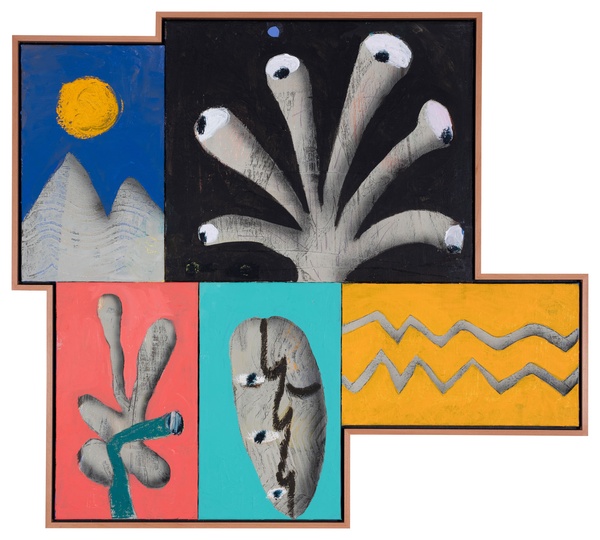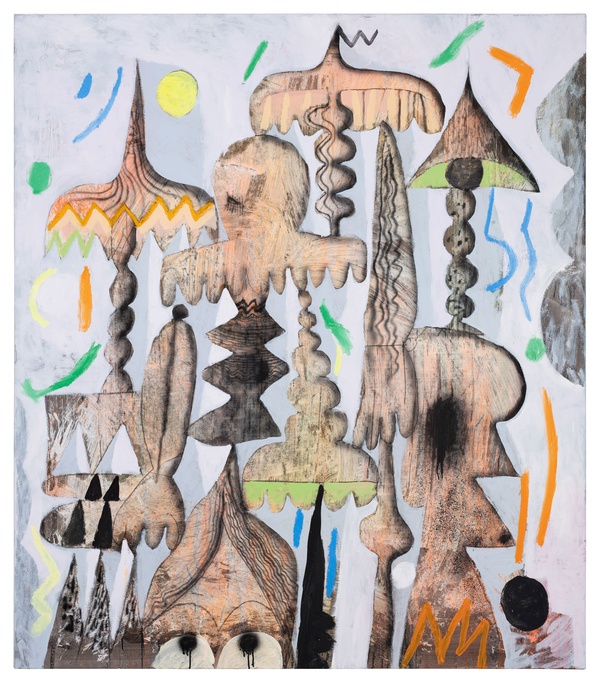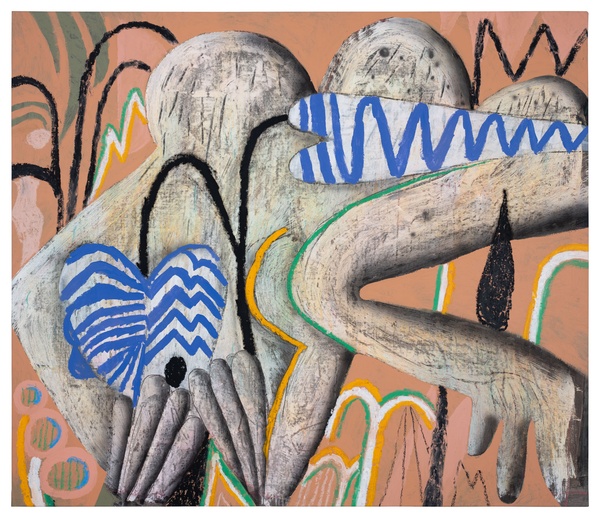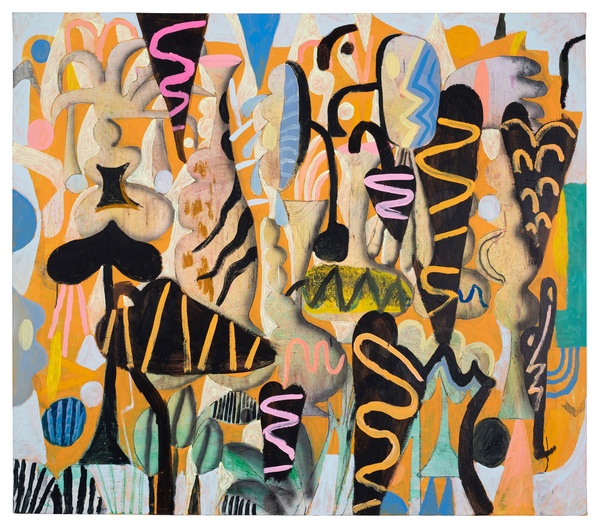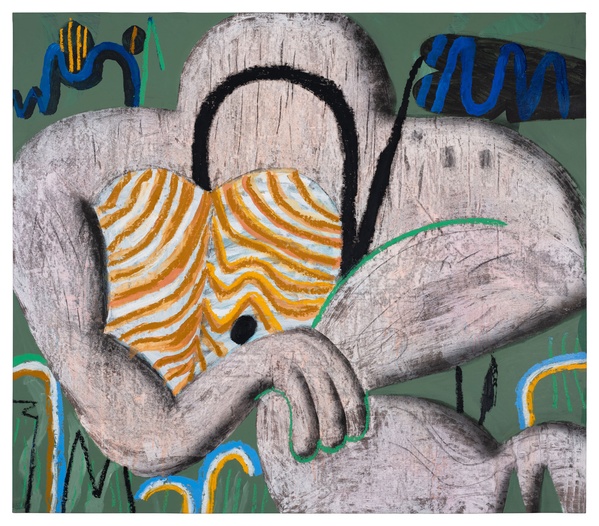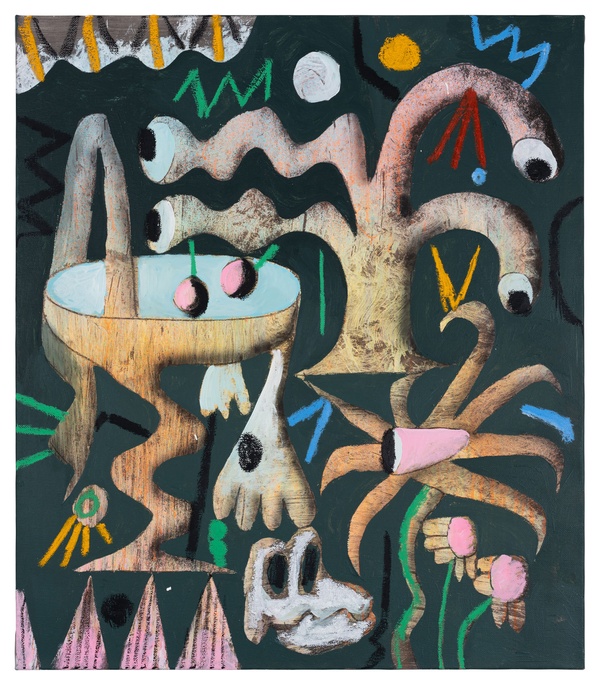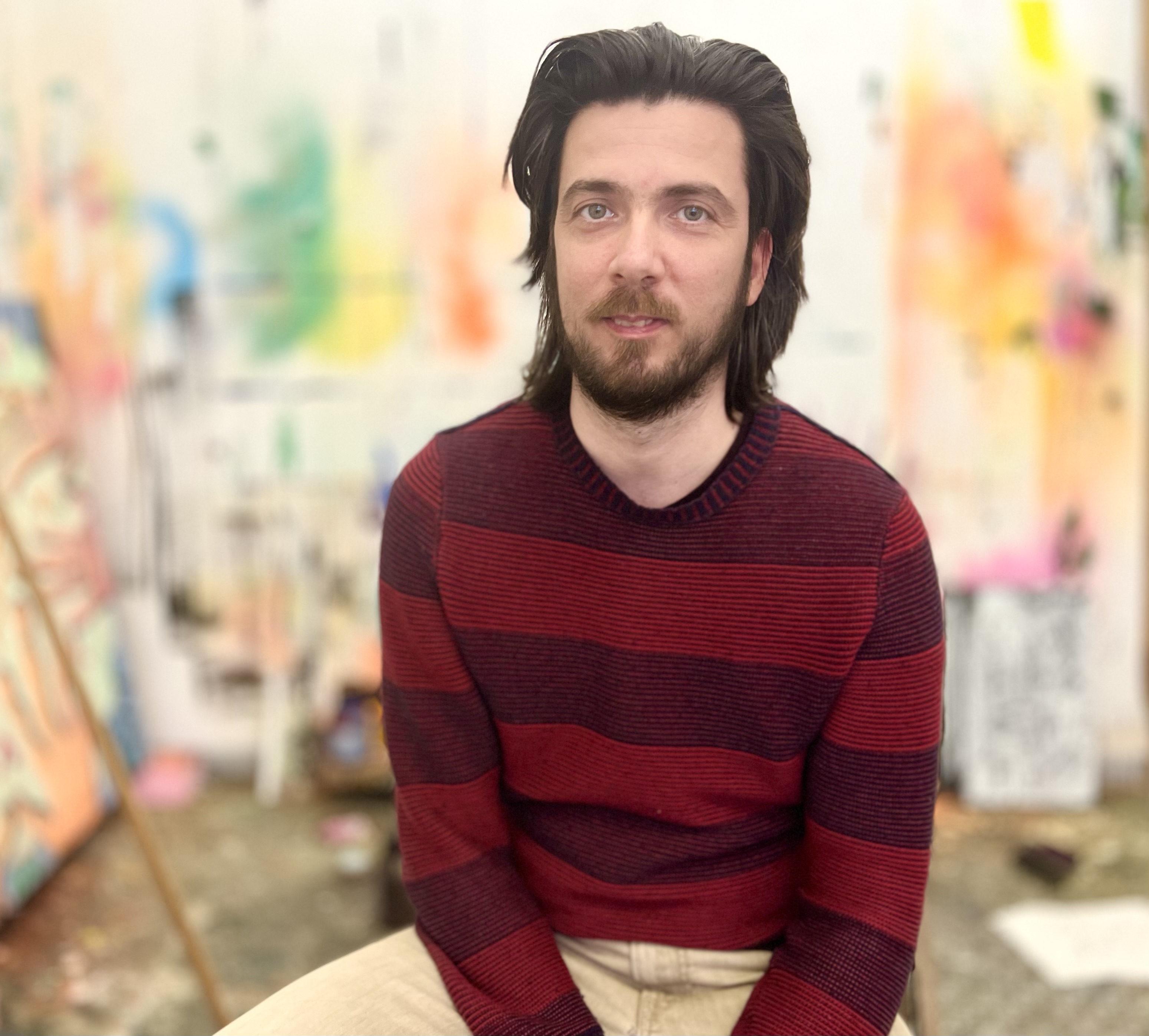
József
Csató
József Csató's oeuvre evokes an immediate feeling of reliance. It is like coming home to well-known genres such as landscape, portrait, still life, narrative, and abstraction. Hints of recognition play with imagination. With a colour palette that makes sombre and lively clash until they embrace each other, the artist creates his free haven where wonder, confusion and chaos receive an honourable mention. The scenes and still lifes are brimming with life and noise as they move into tense compositions, with an exceptional eye for balance and the power of silence.
For Csató, painting is a continuous negotiation with form. Wobbly patterns and totemic, over-scaled, anthropomorphic components pulsate with personality. The artist collects the players on his canvases intuitively. Starting from sketches, he doodles ideas that ultimately never seem to fit on the canvas. ‘A painting is a painting’, he accepts, ‘and plans are to deviate from.’ The paintings have a thin, abstract layer as a nest for the dramaturgy of abstraction and figuration that unfolds later. His technique using both acrylic and oil on canvas gives plenty of room to play with the fluidity of forms. Pareidolia is a psychological phenomenon through which illusion invites faces to be interpreted as arbitrary shapes. There is no direct focus on the creation of anthropomorphic figures. They arise from this whimsical play of the brain, and the artist moves along with what appears as a surprise. In the moment of chance, the confused form shows its true face; the artist then decides to keep what he sees and develops it further. Many small figures dance across the surface or one larger almost breaks out of the frame. Their fluid character does not bow to the boundaries of the canvas. When exhibited, new drawings can grow between the different works of art. Csató describes painting as mountaineering. He begins his journey, but soon notices he has forgotten something and returns, after which he takes another route back up. This happens over and over again. The struggle with composition, the incessant stream of forms born out of the search for solutions, and the constant surprise are the boundless incentives with which he intentionally creates his chaos where references and associations reach their full potential.
